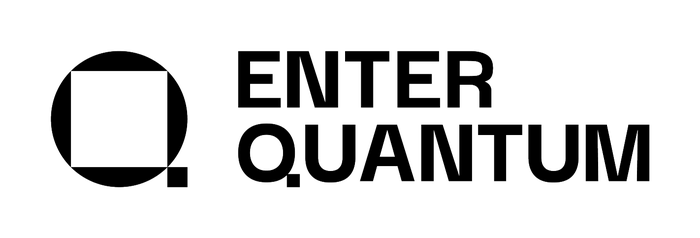
Connects decision-makers and solutions creators to what's next in quantum computing
Quantum, AI Navigation Wins Time Innovation Award; Q&AQuantum, AI Navigation Wins Time Innovation Award; Q&A
Luca Ferrara, SandboxAQ general manager of navigation, discusses the AQNav navigation system

When GPS isn’t available, for the general public it is usually a minor inconvenience often solved by getting to a location with better reception. However, it is a far more serious issue for military and civilian aircraft, which are increasingly under threat from GPS jamming and spoofing by nation-states and others.
Geomagnetic navigation systems using powerful quantum sensors to navigate using the Earth’s magnetic field are one solution to this. SandboxAQ, which works at the intersection of AI and quantum technologies, earlier this year released its unspoofable navigation technology AQNav, following extensive trials with the U.S. Air Force (USAF), Boeing and Airbus. In July, SandboxAQ and the USAF successfully demonstrated the technology aboard a USAF C-17 Globemaster III aircraft.
Bringing together quantum and AI technologies, AQNav was recently recognized as one of Time magazine’s best innovations of 2024. Time described the project as a passion project for SandboxAQ general manager of navigation and ex-Googler Luca Ferrara.
In this Q&A, Ferrara explores AQNav’s development journey, the challenges of a military aircraft environment to quantum systems and how the integration of various disciplines, including physics and computer science, was key to its success.
Enter Quantum: What is the origin story of AQNav?
Luca Ferrara: The concept of magnetic navigation using compasses is ancient. Using maps of the anomaly field, which looks at more information from the Earth’s magnetic field, has its origins in academic groups.
When I was at [Google’s innovation lab] X, when SandboxAQ was still incubated within Google in around 2020, the team was focused on applications of quantum sensing. I got brought over on secondment to look at strategy for this group, and I identified that the core expertise this team was working on, quantum sensing technology, specifically in magnetometry, could be applied to this problem of GPS and navigation.
If you looked at what was going on in academia and took the newest generation of equipment, techniques and modern cloud-based software capabilities, you could pretty quickly join the dots to develop something usable. It took between 2020 and this year to do a real-time demonstration of our equipment on a C-17. But in that period, we've found proof points with, at first, other people's data, using and focusing on the algorithmic approach.
Once we spun out from [Google parent company] Alphabet, we focused on developing our own hardware systems. They create a dataset that encapsulates the information we need about the magnetic environment such that we can pull out a signal from the noise and use it for our proprietary algorithms on the map-matching and navigation side.
The stack is proprietary but what we’ve done with AQNav is stitch together the physics, pull the physics out with hardware and use software to pull out the information from the hardware to do something application-specific at the core.
How does AQNav work?
It’s a modular architecture that treats the sensors in the network as a dataset creator, designed in such a way that they will have enough information in them so we can extract the signal with AI on the aircraft. Signal, in this case, means pulling an estimate of what Earth's magnetic field is in the location where our system is and essentially pretending that the aircraft does not exist in terms of the distortions it creates.
From a software perspective, we clean the data streams and then leverage existing maps of Earth's magnetic field using innovations that we've made in state estimation theory. We have domain-expert geophysicists on hand to design these algorithms that make spatial use of Earth's magnetic field.
The reason we’ve been successful is we have all these different disciplines vertically integrated in-house. We don't produce our own quantum sensors as we believe that there's enough competition and quality in those sensors for us to utilize today. The orchestration of all these things needs to happen for a position solution to be generated.
We're currently focused on aerospace, because the amount of data you have in Earth's magnetic field, and the positional accuracy you can realistically get from that, is most useful. In the short term, we don't believe that magnetic navigation will on average beat GPS, or you an accuracy that's similar to GPS. But globally, with the maps that exist today, we have a compelling ability to maintain the required accuracy needed to enable aircraft to continue to fly, and as time evolves, that should improve.
Quantum technology is notoriously sensitive to environmental noise and aboard a military aircraft is a very noisy environment. How did you overcome that?
It is a real challenge, and maybe the main challenge. The good news is that there is a body of technical knowledge, standards, techniques and procedures around how you calibrate magnetometers on aircraft because systems such as the attitude and heading reference system (AHRS) use calibrated magnetometers located in the wings to do the heading part.
You do something called swinging the aircraft, which is going through the different electronics, recording all the systems as they come on and off, having the airplane do certain maneuvers and capturing all that information to calibrate your system. That requires a fair bit of data capture and AI can help to infer some of that without actually needing it in your dataset.
The cleverer you are with the location of the hardware, or the more affordances you have from an engineering perspective on that aircraft to locate your sensors far away from those noise sources, the easier your job gets. These magnetic field maps are made by putting a boom on the back of an aircraft that's around three meters (10 feet) long.
That's far enough away to be perfectly clean if you can get the scope right. Sometimes I'm tempted to spend all my time finding a very aerodynamic boom, but it's unrealistic for most use cases to put through anything that's not got commercial value at scale.
The Time article described AQNav as your passion project. Where did your passion for this kind of technology come from?
I had a day job at Google and when COVID came I got bored because I was working from home like everybody, and I found this opportunity to do some strategy work for this group that I had never heard of, called SandboxAQ. Once I found out about what they were looking to understand better, I already knew a fair bit about A,I so I decided to learn about quantum and navigation and it was really fascinating.
What was supposed to take up 20% of my time slowly became almost all of my time and I put myself in a position where my day job became a little bit sticky. I decided this was my new day job and to commit to that. Shortly after, we spun out from Alphabet and the team was just me. In only three years, we built a team of a couple dozen people and achieved a lot.
The reason for the passion is threefold. First, cool technologies. It's like a buzzword salad, but the end state of those technologies is easy to understand and interesting. Positioning technologies and navigation systems are something that humanity has developed over time, like the longitude challenge in which the U.K. had a big role. Finally, there's a real need for this technology. A lot of cool technology and products are not as impactful, but I never had to question whether this product would benefit society.
That fuels the passion, because the harder we work to make it real, the sooner it can be in the hands of people, and the sooner it can make an impact on them. That’s a pull that a lot of people like myself are looking for when they look for projects.
About the Authors
You May Also Like

.png?width=100&auto=webp&quality=80&disable=upscale)

.png?width=400&auto=webp&quality=80&disable=upscale)




